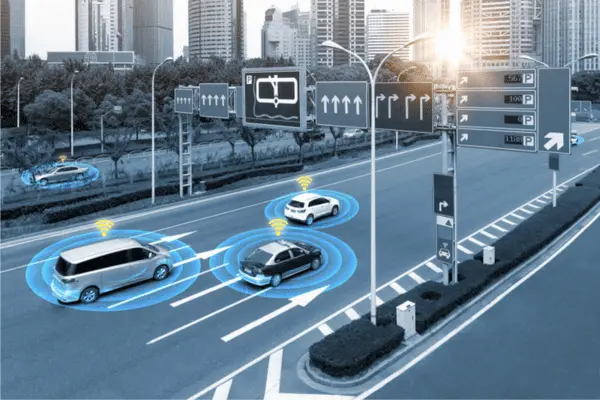VCU Communication Protocols
Introduction
The rapidly evolving branch of automotive technology known as vehicle control units, or VCUs, has assumed the function of the brains of modern cars. These advanced electronic control units oversee and manage several vehicle systems to ensure maximum efficiency, security, and effectiveness.
One key component that makes VCUs function properly is the communication protocols they utilize to communicate with other parts of the vehicle and outside systems.
This blog will go over VCU communication protocols, their use in smart cars, and new concepts that may have an impact on future automotive communication.
The Function of Communication Protocols in VCUs
VCUs are the decision-makers in a vehicle; they gather data from various sensors and control modules and process it before sending commands to engines, actuators, and other components. To facilitate this smooth connection, VCUs rely on communication protocols, which act as a set of rules governing data transmission between various vehicle sections.
Communication protocols enable VCUs to make informed decisions about engine control, stability control, and other vehicle functions based on real-time sensor data, including wheel speed, engine temperature, and steering angle. By enabling connectivity with external systems like entertainment devices, GPS, and connected services, they also guarantee a well-integrated driving experience.
Typical VCU Protocols for Communication
In automotive applications, a variety of communication protocols are commonly used to enable VCU communication. Let’s have a look:
The Controller Area Network (CAN) is one of the automotive industry’s most widely used communication protocols. This reliable and strong link allows data to be transmitted between the numerous electronic control components in the car. CAN operates on a two-wire bus system and offers both high-speed and low-speed communication, making it suitable for a range of applications, such as powertrain control and infotainment systems.
1. The Local Interconnect Network (LIN) is an alternative communication protocol designed to provide slower data transmission within automobiles. Less important uses for it include window control, seat adjustment, and interior lighting. Because of its price and simplicity, LIN is the best choice for applications where a lot of bandwidth and real-time responsiveness are not required.

2. Flex Ray is a high-speed communication protocol that was created to satisfy the growing demands of complex automotive applications. It is appropriate for fault-tolerant real-time applications and safety-critical systems like adaptive cruise control and active suspension due to its greater bandwidth and fault-tolerant qualities.
3. Ethernet: As cars get increasingly networked and data-intensive, Ethernet is gradually finding its way into the automotive sector. The high bandwidth of Ethernet allows the numerous systems and devices within the car to connect seamlessly. It is possible to incorporate in-car entertainment, high-definition cameras, and advanced driving assistance systems (ADAS).
Protocols for VCU Communication: Problems and Advancements
Despite the significant advancements in VCU communication protocols, some difficulties remain to be addressed to meet the demands of the next generation of smart vehicles:
1. Security: As cars become more autonomous and networked, cyberattacks are increasingly likely to occur. To safeguard vehicle occupant privacy and safety, VCU communication mechanisms must be protected from potential threats. Robust authentication, intrusion detection, and encryption methods will be necessary to safeguard the integrity of data transferred between VCUs and external systems.
2. Scalability: As the number of electronic control units and sensors in cars rises, communication protocols must be able to grow accordingly. Future protocols must be able to handle the increasing volume of data while maintaining high dependability and low latency.
3. Standardization: The automobile sector involves a wide range of partners, including suppliers, technology companies, and manufacturers. Standardizing communication protocols among different automakers and car types will promote innovation and interoperability.
4. Upgrades using Over-the-Air (OTA): The ability to perform OTA upgrades will become increasingly important as VCUs and their interactions with other systems become more intricate. Secure and efficient remote upgrades must be provided by VCU communication protocols to enhance functionality and remove any potential security holes.

Future VCU Communication Protocols
The following trends will have a positive impact on the automotive industry, meaning that VCU communication protocols have a bright future ahead of them:
1. Adoption of Ethernet: Owing to its large bandwidth, Ethernet will be more prevalent in VCU communication. With the increasing prevalence of sophisticated sensor systems, in-car entertainment, and autonomous driving, Ethernet will provide the necessary infrastructure for seamless data transfer across many systems.
2. 5G Connectivity: The deployment of 5G networks will alter communication at VCU by enabling faster and more dependable data transmission. The low latency and high throughput of 5G will be advantageous for two real-time applications: autonomous driving and V2X (vehicle-to-everything) communication.
3. Time-sensitive applications such as autonomous driving and ADAS can benefit from Time-Sensitive Networking (TSN), an Ethernet advancement that aims to provide real-time capabilities. TSN’s ability to arrange and prioritize data packets will result in rapid and deterministic communication between diverse components.
4. Smooth Integration with Cloud Services: To facilitate enhanced functionality, preventive maintenance, and personalized user experiences, VCU communication protocols will be developed to integrate with cloud-based services seamlessly. Furthermore, the ability to integrate data from several vehicles will be made possible via cloud connectivity, resulting in data-driven insights and improving vehicle performance.

Conclusion:
To sum up, VCU communication protocols enable efficient data transfer and system coordination, which are the basis of modern smart cars. As automobiles continue to advance with the advent of electrification, autonomous driving, and connected mobility, the necessity for scalable and dependable communication protocols cannot be overstated.
The deployment of TSN, the uptake of Ethernet, the deployment of 5G connections, and the seamless integration of cloud services will all have an impact on VCU’s communication landscape. VCUs will be crucial in determining the direction of the automobile industry and leading us toward a safer, more effective, and more connected future on the roads by fixing the issues and embracing these trends.
If you are seeking a trustworthy VCU supplier or would like to discuss possible partnerships for VCUs, send an email to info@dorleco.com.

